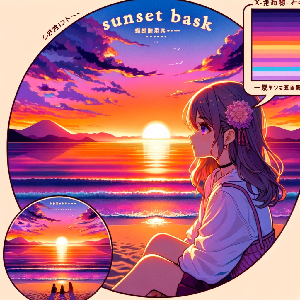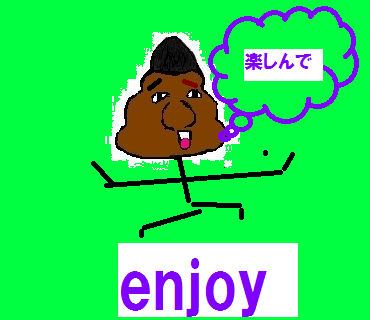
ダンスしよう
PR
EDMにて発売中↓↓
https://www.tunecore.co.jp/artists?id=801570
DJ
https://item.rakuten.co.jp/auc-mhfriend/1329493/
ミュージックハウス フレンズ
DJ機材、楽器の激安通販
https://www.rakuten.co.jp/auc-mhfriend/

提案: 少し踊ろう
Dancing at the Disco:
Disco, popularized in the late ’70s and ’80s, refers to both a style of dance music and nightclubs that primarily played this genre. The dance style of this era is characterized by flamboyant fashion, glitter balls, and colorful lights, reminiscent of scenes from movies like “Saturday Night Fever,” featuring specific steps and moves.
Dancing at the Club:
Modern nightclubs feature a wide range of dance music genres, including house, techno, hip-hop, and R&B. Club dancing is more freestyle, where people move their bodies to the rhythm set by the DJ. Some clubs may also be known for specific dance styles or cultures.
Dancing at a DJ Festival:
DJ festivals or music festivals typically feature multiple DJs or live acts, with a focus on Electronic Dance Music (EDM). Dancing here takes place in large outdoor settings or massive venues, often accompanied by extravagant visual effects, light shows, lasers, and pyrotechnics. Each performance at these festivals can have a different musical style, influencing the way people dance.
The Social Aspect of Dancing:
In each of these scenes, interaction with others is also a key element. Whether it’s a disco, club, or DJ festival, these venues serve as a place for people to gather and enjoy social interactions alongside music. Participants experience a sense of unity and liberation through dancing, immersing themselves in each scene’s unique culture and energy.
- #DiscoDancing
- #NightclubDance
- #DJFestival
- #DanceMusicCulture
- #ClubbingExperience
- #EDMFestival
- #DancingStyles
- #MusicAndDance
- #SocialDancing
- #DanceFloorVibes
「DISCOでダンス、クラブでダンス、DJフェスでダンス」という表現は、ダンスミュージックと社交の場としてのダンスフロアの楽しさを表しています。それぞれのシーンでのダンスの体験は異なる雰囲気や特徴があります。
- ディスコでのダンス:
- ディスコは70年代後半から80年代にかけて特に流行したダンスミュージックのスタイルと、その音楽を主に流すナイトクラブのことです。
- この時代のダンスは華やかなファッション、グリッターボール、カラフルなライトとともに、”Saturday Night Fever”のような映画で見られるようなステップやムーブが特徴です。
- クラブでのダンス:
- 現代のナイトクラブでは、ハウス、テクノ、ヒップホップ、R&Bなど多岐にわたるジャンルのダンスミュージックが流れています。
- クラブのダンスはより自由形式で、人々はDJが流すリズムに合わせて身体を動かします。また、クラブによっては特定のダンススタイルを持つ場合もあります。
- DJフェスでのダンス:
- DJフェス、または音楽フェスティバルでは、一般に複数のDJやライブアクトが出演し、エレクトロニックダンスミュージック(EDM)が中心です。
- ここでのダンスは、屋外や巨大な会場での大規模な群衆の中で行われ、華やかなビジュアルエフェクト、ライトショー、そしてしばしばレーザーやピロテクニクスが特徴です。
- フェスティバルでは、個々のパフォーマンスごとに異なる音楽スタイルがあり、ダンスもそれに合わせて変わります。
これらのシーンでダンスを楽しむ際には、周りの人々との相互作用も重要な要素です。ディスコ、クラブ、DJフェスともに、音楽とともに人々が集まり、社交的なインタラクションを楽しむ場所としての役割も担っています。それぞれが持つ独自の文化やエネルギーを体感しながらダンスをすることで、参加者は一体感や解放感を得ることができます。
The Disco Era: A Retrospective Dive into the ’70s and ’80s
The disco era, epitomizing the late ’70s and ’80s, represents a significant cultural phenomenon. Discotheques, or discos, weren’t just nightclubs but vibrant social hubs where dance music was an essential part of popular culture. The music style, characterized by a steady four-on-the-floor beat, rich basslines, and often orchestral accompaniments, created an infectious rhythm that compelled people to dance.
Fashion was flamboyant, featuring bell-bottoms, platform shoes, and glittery outfits, aligning with the vibrant and flashy décor of disco halls adorned with mirror balls and psychedelic lights. Iconic films like “Saturday Night Fever” immortalized disco dancing, showcasing synchronized group dances and individual expressions, making disco a symbol of the era’s social liberation and joyous escapism.
Modern Clubbing: The Evolution of Nightlife and Dance
Transitioning from disco to the modern nightclub scene, we witness an evolution in musical diversity and dance styles. Contemporary clubs offer a plethora of genres – from pulsating electronic beats like house and techno to the rhythmic allure of hip-hop and R&B. These venues are not just about dancing but are immersive experiences combining sound, lighting, and visual effects, creating an ambiance where dancers lose themselves in the music.
Club dancing is less about choreographed moves and more about individual expression. The focus is on freedom, letting the music dictate the movement. Some clubs are known for specific music genres, attracting dedicated followers who share a common passion for that style. In these spaces, DJ acts not just as music players but as curators of the night’s rhythm and mood.
The Festival Scene: Dancing in a Communal Celebration
DJ festivals and music festivals like Tomorrowland or Ultra Music Festival have redefined the collective experience of dance music. These events are characterized by line-ups of multiple renowned DJs and artists, with EDM often being the centerpiece.
Unlike the confined space of a club or disco, festivals are usually held outdoors or in vast venues, accommodating large crowds. Here, dancing becomes a communal act, shared among thousands of attendees. The experience is augmented by grand visual displays, intricate light shows, and often, pyrotechnics, enhancing the sensory experience. Each act brings its unique sound, shifting the dance dynamic throughout the event.
Social Interaction: The Unifying Power of Dance
Across all these venues, dancing serves as a medium for social interaction. In the disco era, group dances and partner dancing were common, fostering connections. In modern clubs, even though the dancing might be more individualistic, the shared experience of music and rhythm creates a bond among attendees. At festivals, the sense of community is palpable, with people uniting from different backgrounds to celebrate music and dance.
- #DiscoDancing
- #NightclubExperience
- #MusicFestivals
- #DanceCulture
- #ClubbingLifestyle
- #EDMCommunity
- #DiscoFashion
- #DJPerformances
- #DanceMusicEvolution
- #SocialDancingScene
【広告】
EDMにて発売中↓↓
https://www.tunecore.co.jp/artists?id=801570
